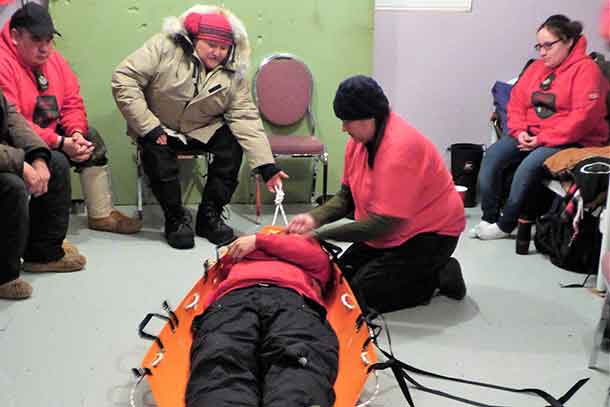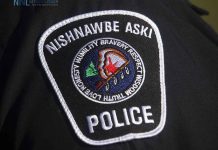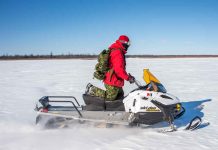
By Pam Chookomoolin
Fort Severn – Canadian Rangers from Ontario’s two most northerly communities – the remote Cree communities of Fort Severn and Peawanuck – have completed a weekend of joint training with an emphasis on life saving techniques.
“The purpose of the joint exercise was to get the two communities to train together, since historically a number of searches have taken place between the two communities,” said Sergeant Dan Stortz, a Canadian Army instructor. “When both communities train together and have the same procedures then it makes working together a lot easier in the future.”
But the joint exercise was not all work. There was also joint hunting. During a rest break in the training, the Rangers spotted a herd of caribou crossing a nearby frozen lake. Two of the Rangers, Sergeant Matthew Gull from Peawanuck and Corporal Dennis Kakekaspan of Fort Severn, were able to harvest 10 of them.
Rangers from both communities have conducted successful search and rescue missions in the past. Most of them were done by members of a single patrol. But when necessary they work together.
Rangers from Fort Severn and Peawanuck conducted a joint snowmobile search last year that resulted in national headlines when they teamed up to save the life of a 71-year-old Fort Severn elder who was reported overdue on the 190-kilometre trip from Peawanuck to Fort Severn.
The Rangers found him trying to walk back to Peawanuck after spending more than 14 hours in temperatures that dropped to -49C. His snowmobile had run out of fuel. Two Rangers from Fort Severn, who were part of the search operation, escorted him safely from Peawanuck to Fort Severn.
His rescue was one of 25 conducted by Rangers in Northern Ontario in 2016, resulting in the saving of 32 lives.
Ranger training employs real-life scenarios that may be encountered during search and rescue missions. The ice rescue training during the exercise, for example, was done in the dark to provide more realism.
Going into the water while wearing an immersion suit to protect him from the cold was a new experience for former Junior Canadian Ranger Joseph Hunter of Peawanuck, who was sworn-in as a Canadian Ranger only four days before the training began. He called it “crazy, but a fun learning experience.” The training taught the Rangers techniques for getting themselves out of the water unaided and for rescuing victims.
Sergeant Mary Miles, commander of the Fort Severn Canadian Ranger patrol, provided part of the training instruction. She showed the Rangers how to use a new type of stretcher that is now a standard part of the emergency equipment provided to Rangers across the Far North of Ontario. The stretcher can be carried, pulled, dragged, and slung from a rescue helicopter.
The weekend’s training also included target practice with rifles and knot tying.
Sergeant Miles said the joint training was important and a means of getting “to know the other Rangers, what they do, and learn from their skills”.
“Sergeant Miles did an excellent job” said Sergeant Stortz. “I find it important that once Rangers have the knowledge, they do most of the instructing themselves. It betters their skills as instructors and in patrol leadership.”
(Master Corporal Pam Chookomoolin is a member of the Peawanuck Canadian Ranger patrol.)






